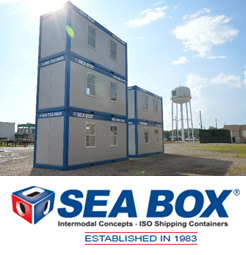Why Every Engineer Should Learn Geometric Tolerancing
Key Takeaways
- GD&T/GPS reduces errors, waste, and rework across the product lifecycle.
- Standardized communication strengthens collaboration with suppliers and internal teams.
- Engineers who master geometric tolerancing gain a valuable skill and competitive advantage.
Many engineers view geometric tolerancing as a specialized skill. Although it may not be a standard part of every engineering curriculum, those who master it become better designers, communicators, and collaborators. An engineer who is fluent in the language of geometric tolerancing can minimize miscommunication, streamline production, and deliver higher-quality products faster.
Here’s why all engineers, especially those responsible for developing models and specs that guide the entire product lifecycle, should learn geometric tolerancing.
What Is Geometric Tolerancing?
Geometric tolerancing defines the allowable variation in a part’s form, orientation, and location using a precise, standardized language of symbols.
Unlike traditional, linear tolerancing methods that rely on plus/minus values for individual dimensions, geometric tolerancing controls a part’s allowable variation by specifying zones and relationships for features such as flatness, perpendicularity, and position. This approach provides more comprehensive control over form, orientation, and location, ensuring that parts fit together and function as intended.
Geometric tolerancing uses feature control frames and symbols defined by ISO GPS or ASME GD&T standards to clearly describe how a part must be manufactured and inspected. Design engineers use these GPS or GD&T symbols to specify which feature is being controlled, which reference points are being used to anchor the design, and how much variation is allowed.
Ultimately, GPS and GD&T serve to eliminate ambiguity and streamline collaboration across design, engineering, manufacturing, quality, and supplier teams. With increased clarity, teams can create manufacturable parts that perform as intended while reducing costly rework and improving collaboration across the product lifecycle.
Why Design Engineers Must Learn GD&T/GPS
Design engineers shoulder a huge responsibility for product success because the choices they make ripple through manufacturing, inspection, and even customer satisfaction. GD&T/GPS supports the production process in many ways, including:
Defining Functional Limits
Design engineers define the exact boundaries that make a part functional. GD&T/GPS allows them to express these limits precisely, leaving no room for guesswork or misinterpretation.
Ensuring Clear Communication
GD&T/GPS provides an internationally recognized language for defining design requirements, ensuring clear communication between all stakeholders and teams. This alignment minimizes the risk of misinterpretation and keeps production running smoothly.
Preventing Costly Mistakes
When tolerances are poorly defined or ambiguous, manufacturers may make assumptions about design requirements. This often leads to costly rework, missed deadlines, and performance failures. GD&T/GPS safeguards against these risks, protecting product quality and the bottom line.
Benefits of GD&T/GPS for Design Accuracy
Geometric tolerancing gives design engineers a framework to balance functionality with manufacturability, ensuring parts work as intended without wasted effort or cost. Benefits of GD&T and GPS include:
Balanced Tolerancing
GD&T/GPS helps engineers avoid over-tolerancing or under-tolerancing. Defining appropriate tolerances ensures that parts function as intended while remaining practical and cost-effective to manufacture.
Reliable Fit and Assembly
When tolerances align with design requirements, parts fit together properly the first time. This makes assemblies more efficient and reduces costly rework.
Early Validation
GD&T/GPS supports tolerance stack-up analysis and digital simulations, helping engineers catch potential issues before they hit the production floor.
Reducing Errors with GD&T and GPS
One of the greatest strengths of geometric tolerancing is its role in eliminating ambiguity in product specifications. Traditional 2D drawings and loosely defined tolerancing annotations often leave room for interpretation, which can lead to mistakes in machining or inspection.
By providing a standardized language for defining product specifications, GD&T and GPS reduce ambiguity.This clarity in communication directly reduces the risk of incorrect machining or incomplete specifications that cause costly rework. The result is higher first-pass yield with more parts meeting requirements the first time they’re produced.
Speed and accuracy are crucial in fast-paced, high-precision manufacturing environments. When manufacturers implement GD&T/GPS workflows, they see improved product quality, accelerated time-to-market, and a stronger competitive advantage over organizations relying on outdated tolerancing practices.
How GD&T/GPS Improves Engineering Communication
One of the primary ways GD&T/GPS reduces errors is by improving communication across the entire engineering and production ecosystem:
- Providing a Common Language: Clear, standardized symbols and rules connect design specifications directly to manufacturing and inspection, reducing the risk of mistakes and time lost in clarification.
- Strengthening Supplier Collaboration: In global supply chains, GD&T/GPS helps suppliers understand exact requirements without relying on assumptions based on unclear notations.
- Streamlining Inspection Processes: Standardized symbols and callouts accelerate inspection setup, improve repeatability, and enable faster, more reliable validation.
Defining geometry and tolerances using a universally understood framework eliminates guesswork and ensures teams are interpreting requirements in the same way. GD&T/GPS also lays the groundwork for leveraging digital and model-based workflows, where communication becomes even more seamless and automated.
Role of GD&T/GPS in Digital Workflows
GD&T/GPS is the backbone of digital production workflows, including Model-Based Definition (MBD) and Digital Thread strategies.
When included in 3D CAD models, GD&T/GPS communicates design specifications in a way that flows seamlessly through every stage of production and inspection. CAM software, CMM systems, and quality assurance tools can read GD&T/GPS specifications directly from the CAD file, eliminating reliance on error-prone manual notations. Digitally integrating GD&T/GPS also enables automation in downstream processes like part programming, inspection alignment, and process control.
GD&T/GPS and MBD go hand-in-hand, supporting a unified workflow that reduces errors and rework while also improving collaboration across dispersed teams and suppliers.
Industries Where GD&T/GPS Is Non-Negotiable
Certain industries rely on GD&T/GPS and digital workflows to achieve a high level of precision, consistency, and speed. These industries include:
Aerospace & Defense
Aircraft, spacecraft, and defense systems involve complex assemblies and strict regulatory oversight. Even minor deviations impact safety and performance.
Automotive
High-speed, high-volume production demands standardized specifications. Automakers rely heavily on global suppliers and must ensure consistency and interchangeability across production sites worldwide.
Medical Devices
From implants to surgical instruments, precise tolerances are essential for safeguarding patient health and safety. Medical device companies use GD&T/GPS to ensure repeatable accuracy and validate that every component performs as intended under strict clinical and quality standards.
Electronics & Energy
As components become smaller and more integrated, precise alignment and durability are essential for long service lives and reliability under extreme conditions.
How to Learn Geometric Tolerancing
Mastering GPS/GD&T requires both structured learning and practical application. Formal GPS or GD&T training is a great place to start. Training programs provide a solid foundation for understanding the symbols and rules that govern ISO GPS and ASME GD&T.
From there, engineers can strengthen their skills by using specialized tools such as GD&T Advisor or CETOL 6σ — tools that integrate tolerancing into real design workflows. Applying new knowledge to real-world projects helps learners reinforce concepts, and working alongside experienced mentors provides an avenue for real-time feedback and guidance.
Because standards evolve, teams need to stay current with GD&T and GPS updates from ASME and ISO. Regularly reviewing changes ensures compliance and alignment with industry best practices.
Combining formal instruction, hands-on practice, and ongoing learning helps engineers develop true fluency in geometric tolerancing. A strong foundation in GD&T/GPS prepares teams to meet today’s diverse production challenges.
Turn Precision into Competitive Advantage with GD&T/GPS
For design engineers, geometric tolerancing represents both a technical skill and a strategic advantage. Engineers with GD&T/GPS knowledge and experience help their teams strengthen communication, reduce waste, and improve quality across the product lifecycle.
Ready to take the next step in your engineering career? Sigmetrix offers industry-recognized GD&T and GPS training to help you build better, faster, and more precisely. Learn more about our GPS and GD&T training



